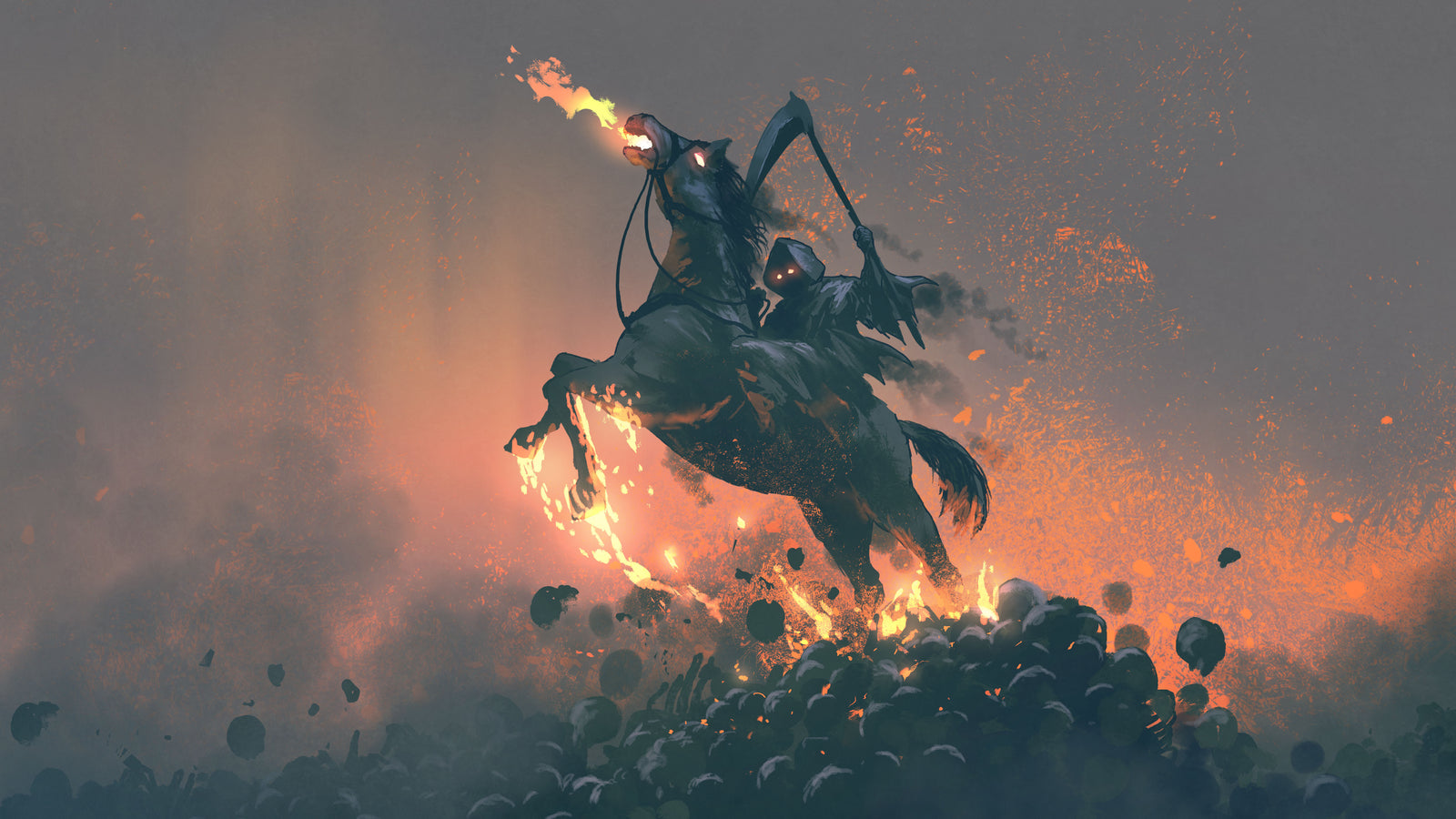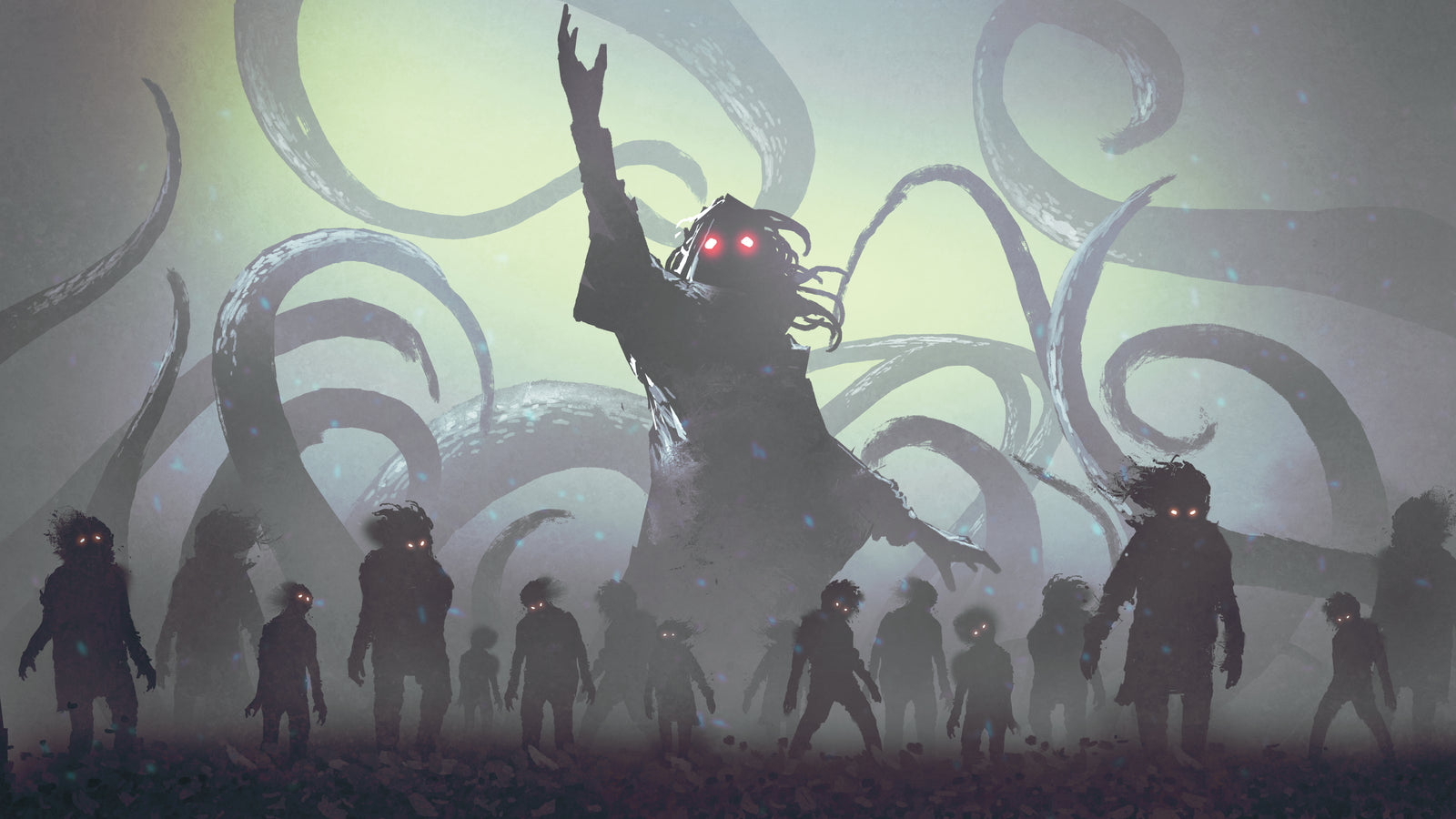Your Cart is Empty

How To Create Compelling NPCs In Seconds
October 16, 2020 3 min read
If your D&D group is anything like mine, they're always talking to an NPC you had absolutely no plans for in your notes.
Sound familiar?
Maybe the players bailed on the plan to explore the Sunken Tomb of Yix-Nathir, or maybe they decided to get really, really interested in the halfling barkeep for no reason at all.
Either way, every DM will face the inevitable need to come up with a compelling NPC on the fly and make it look like it was the plan all along. So how do you go from nothing to a clever, sassy potion vendor in a matter of seconds?
First off, you need a formula. NPCs suffer from the problem of infinite options — with no real limit to what you can choose, it's easy to get stuck on the sheer abundance of possibilities. Suddenly, you don't know if you should pick an accent first, or portray the NPC as a shady person, or come up with some unique quirks. Or maybe you can't think of a single interesting thing at all except that the NPC has a red beard.
I've hit this problem so many times that I had to impose some rules for my brain to work within. I limited my NPC design to four crucial elements (I also have a process for helping me decide the toughest element out of the four). After a bit of practice, the whole thing now takes me just a few seconds. Kind of cool, right? Let me show you how I do this:
1. Name. I'm so bad at this that I made a mini GM screen with a huge list of names on the inside that I keep handy at all times. You can also make a list of your own!
2. Appearance. I think of one or two standout elements that will help the players remember what the NPC looks like. The key is to take a feature and make it unusual. Example features include: Hair, height, clothing, demeanor, posture, injuries, eyes, weight, jewelry, racial traits, lack of expected traits.
3. Does. A tic, behavior, or frequent action that shows a bit of character. Take a typical behavior this NPC would do. Then, once again, make it unusual. Examples include: Blinks very hard, wipes mugs repeatedly, clenches jaw, burps frequently, has a high-pitched laugh, constantly realigns his wig.
4. Secret. The most interesting part. Every NPC has a secret, and that informs how the NPC behaves. For example, is this NPC in support of the local cult? He might be a bit nervous around the players in that case.
 Join The Arcane Library's newsletter for a free 1st-level adventure, plus more articles like this one!
Join The Arcane Library's newsletter for a free 1st-level adventure, plus more articles like this one!
Now, choosing a secret can be tough — so I have a trick for doing this fast. I use a process called the FORD Method (originally developed to help people figure out what to ask each other in awkward small-talk situations) to pin down something the character has a secret about. FORD stands for Family, Occupation, Recreation, and Dreams.
I choose one FORD element (sometimes I roll a d4!), and then I give the NPC something to hide about that particular subject. For Family? Perhaps this NPC has a troublesome brother he's looking after. For Occupation, maybe the NPC is a good archer because she had to defend her family farm against invading goblins as a child.
I bet you could come up with some excellent examples for Recreation and Dreams!
Finally, when I'm making an NPC on the spot, I don't worry about alignment. That will show through in the NPC's behavior based on the choices you made above. In my published adventures, I include a flavorful quote and alignment for each NPC, but for on-the-fly play, you don't strictly need those.
What do you think? Will this help you pull an NPC out of the ethereal next time you need one? I'd love to hear if you've used this process, or if you have a personal favorite NPC of your own who will stand out in your players' minds!
Header art by breakermaximus / shutterstock.com
Also in Arcane Articles

How To Design Exciting D&D Encounters
November 08, 2022 6 min read
Encounters are one of the most important parts of Dungeons & Dragons. So how do we make sure we're designing good ones?
Read More
How to Write A D&D Adventure: The Complete Guide
October 21, 2021 14 min read 6 Comments
So you want to write a 5E D&D adventure? Read on for the step-by-step process I've developed over the years for writing an action-packed D&D adventure with as little friction as possible.
Read More
Imagine First, Design Second
May 05, 2021 4 min read 7 Comments
Sometimes, I write a dud. Here's the story of how I recently wrote an adventure that went nowhere, and how I managed to learn something useful from the whole experience in the end.
Read More